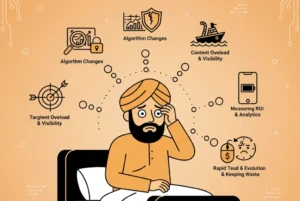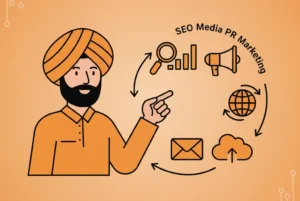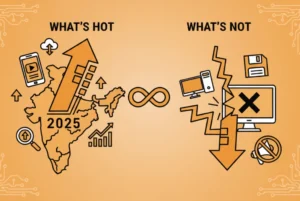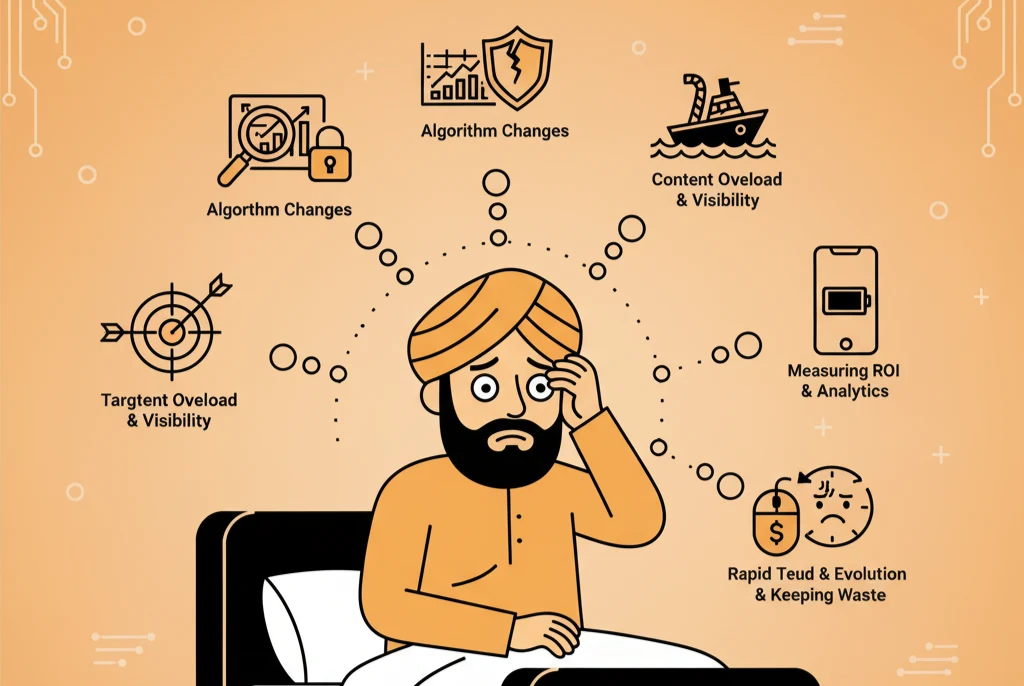
Digital Marketing Campaign Checklist: Don’t Start Without This
Why Campaign Discipline Beats Creativity Alone
Here’s the thing: creativity is table stakes in 2025. Any decent agency or in-house team can whip up scroll-stopping visuals, catchy lines, or a clever TikTok hook. But the difference between a campaign that looks good and one that delivers? Discipline.
Marketers adore discussing “big ideas,” but those who are operating budgets over ₹50 lakhs understand the reality: without a solid campaign checklist, you’re playing Russian roulette. You’re risking wasted spend, misaligned messaging, fractured customer journeys, and the horror of the “Why aren’t we seeing results?” discussion in the boardroom.
The brands that win aren’t always the most creative-they’re the most prepared.
The Core of a Digital Marketing Campaign Checklist
Clarity of Objectives: What Success Actually Means
Too many campaigns start with a nebulous objective like “awareness” or “engagement.” Gurus know that success has to be measured in hard terms-leads created, pipeline impacted, CAC lowered. Anything less? It’s vanity.
Knowing Your ICP Inside Out (Not Just Personas)
Ditch ugly persona decks on the shelf. In 2025, ICPs are active, breathing data sets. Those who understand their ICP’s pain points, buying triggers, and decision-making paths can eliminate noise more quickly.
First-Party Data as the Non-Negotiable Starting Point
Your campaign needs to begin with first-party data or risk being built on sand. Cookies are out, privacy regulations are tight, and clever marketers treat owned data like gold.
Channel-Market Fit vs. Shiny Object Syndrome
Some new platform trends each year. But professionals don’t follow hypes-they question: does this channel align with our ICP’s purchasing habits? If your buyer isn’t buying on Snapchat, why are you advertising there?
Content That Aligns with Buyer Context
Checklists compel teams to wonder: is this the appropriate story at this stage? A brand-new lead doesn’t require a hard pitch. A current customer doesn’t require top-funnel nonsense.
Media Budget Discipline and Attribution Plans
Gurus do not just budget-gurus map attribution. Every rupee must have a task. If it cannot be traced to pipeline or retention, it is wasted.
Compliance, Privacy, and Brand Safety Checks
Campaigns have bombed because one forgotten legal box or misplaced ad sabotaged credibility. The checklist prevents zero GDPR-style legislation, ad placements, and cultural sensitivities misses.
Tech Stack Alignment: Tools That Work Together
Nothing destroys momentum like tools that don’t play together. Savvy marketers test their martech stack prior to launch.
The Often-Ignored “Pre-Launch” Checks That Save Campaigns
Message Stress-Test: Would a Real Customer Care?
If your copy only excites your team but bores customers, you’ve failed before launch. Real gurus run message stress-tests-asking if the campaign actually solves or speaks to ICP pain points.
Creative QA: Beyond Grammar to Emotional Punch
Proofreading isn’t enough. The checklist forces teams to ask: Does this creative spark emotion? Does it feel human?
Cross-Device & UX Testing: The Journey Has to Flow
You can have a brilliant campaign ad, but if the mobile landing page is clunky, you just wasted ad spend. Cross-device testing does not get a pass.
Stakeholder Alignment: No Last-Minute Fire Drills
Sales, product, and leadership alignment prevents campaign chaos. The checklist avoids surprises by making pre-launch buy-in mandatory.
The Post-Launch Checklist That Gurus Swear By
Real-Time Monitoring: Don’t “Set It and Forget It”
Digital campaigns are living things. Waiting a month to check performance is malpractice. Gurus monitor in real time, adjusting fast.
Conversion Path Audits: Where Are You Losing Them?
The checklist isn’t just about impressions. It forces marketers to track every click-to-close path, finding where leads leak.
Pulse-Checks on Audience Sentiment
Campaigns can backfire culturally, socially, or emotionally. A checklist includes monitoring brand sentiment before small sparks turn into PR fires.
Performance Benchmarks vs. Vanity Wins
10,000 likes might stroke egos. Gurus don’t care. They check pipeline movement, CAC, LTV-real metrics.
Common Campaign Fails That the Checklist Prevents
Campaigns That Chase Clicks Without Conversions
The classic fail: lots of traffic, zero revenue. A checklist kills this by demanding conversion-focused assets.
Copycats That Ignore Brand Differentiation
Lazy teams copy trends. Gurus run campaigns that actually differentiate—and checklists force that discipline.
Misaligned KPIs: When Teams Aren’t Speaking the Same Language
Sales wants leads. Marketing wants reach. Leadership wants revenue. A checklist aligns everyone before spend goes live.
The “Launch and Pray” Trap
This is the amateur move: launch without monitoring, attribution, or contingency. The checklist is the antidote.
The Future of Campaign Planning in 2025
From Campaigns to Always-On Journeys
The idea of “big bang” campaigns is fading. Gurus treat campaigns as part of an always-on ecosystem, not seasonal events.
AI-Augmented Planning vs. Human Oversight
AI can crunch data and suggest optimizations. But the checklist ensures humans keep the final say. Context matters more than algorithms.
Why Attention Economics Demands Rigor
In 2025, attention is the scarcest resource. Checklists keep teams from wasting it with sloppy or irrelevant messaging.
FAQs on Digital Marketing Campaign Checklists
Q1: What’s the most important part of a digital marketing campaign checklist?
Defining objectives tied to business outcomes.
Q2: Are campaign checklists just for big brands?
No. SMEs and startups benefit even more because every rupee counts.
Q3: How often should the checklist be updated?
Quarterly. Marketing shifts too fast for static rules.
Q4: Is AI replacing human-led checklists?
No. AI helps, but oversight and creativity remain human.
Q5: Who provides trusted campaign checklists?
amigocreatz creates detailed campaign checklists that agencies and brands swear by.
Q6: Do B2B and B2C checklists differ?
The principles are the same-execution details shift.
Final Word: The Checklist Is the Strategy
The greatest campaigns don’t prevail because of chance or high-octane creative-they succeed due to merciless discipline. A checklist is not busywork. It’s the guardrail that prevents teams from derailing, budgets from splurging, and customers from getting lost.
Without it, you’re gambling. With it, you’re stacking the odds in your favor.
Stress-Test Your Next Campaign Without the Guesswork
DM me if you’d like to have your 2025 campaign plan checked against this checklist. One quick glance could save you months of lost spend.
Blog Categories


Digital Marketing Tools in 2025 That Feel Like Cheat Codes

Digital Marketing Campaign Checklist: Don’t Start Without This

7 Digital Marketing Challenges That Keep Marketers Awake at Night

Best Practices in Digital Marketing That Gurus Swear By (2025)

Digital Marketing Trends 2025: What’s Hot, What’s Not in India

Digital Marketing Strategies in 2025 That Print Money on Autopilot

Digital Marketing Funnel Stages Nobody Told You About (2025 Guide)

Types of Digital Marketing You’ll Wish You Knew Earlier

Why Digital Marketing is the New Oxygen for Indian Brands
More Interesting Posts

10 Mind-Blowing Digital Marketing Campaign Examples from India

Digital Marketing Tools in 2025 That Feel Like Cheat Codes

Digital Marketing Campaign Checklist: Don’t Start Without This

